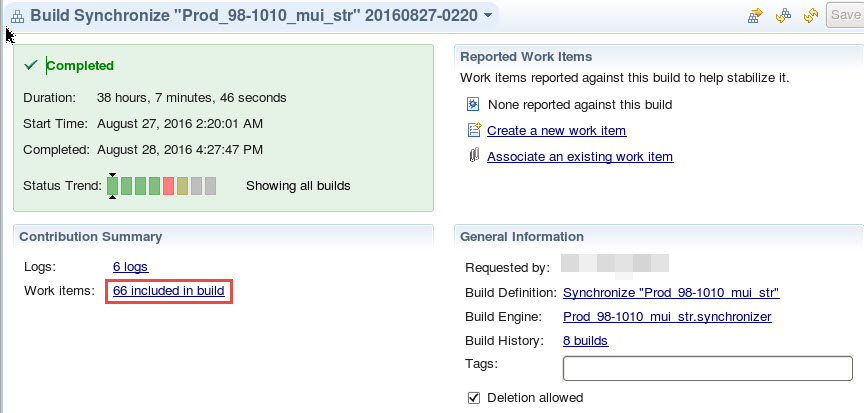What is the criteria used for creating multiple tasks when importing ClearCase source code while using the synchronizer?
I would like to understand the rational behind the number of tasks created when performing a single import using the ClearCase Synchronizer. In the example below, the single import created 66 separate work items (i.e. tasks) over the course of ~38 hours in order to complete.



What determines the number of tasks created? Why can't it just be one task for the whole import?
A sample of 6 tasks created by the synchronizer are listed below:

The change sets above were all created and added by our synchronizer account.
Any input would be appreciated.
Thanks
Accepted answer
The synchronizer currently creates a separate task for each change set.
As I recall, the rationale for creating a separate task for each change set is that a description of the imported activities is stored in the Description of the task, and if only one task were created for a given import, the information could overflow maximum field length of the Description field.
As I recall, the rationale for creating a separate task for each change set is that a description of the imported activities is stored in the Description of the task, and if only one task were created for a given import, the information could overflow maximum field length of the Description field.
Comments
I had a couple follow up questions:
1) It would appear that the state of each task remains as "New" following an import or a synchronization with the ClearCase synchronizer. Is that the expected behavior? Or should these be closed automatically by the importer/synchronizer once the import/sync is completed?
2.) Where does each task inherit the value set for "Filed Against"?
(1) Yes, that is the expected behavior.
(2) It just uses the first one that it finds in the project area.
To override this default behavior, a user is allowed to specify a "work item template" for the tasks created for synchronization, which is used to initialize the fields of the synchronization tasks. So if you don't like the default work item properties, create a work item that has the type and other properties that you want, and set that to be the work item template for the synchronized stream.
1 vote